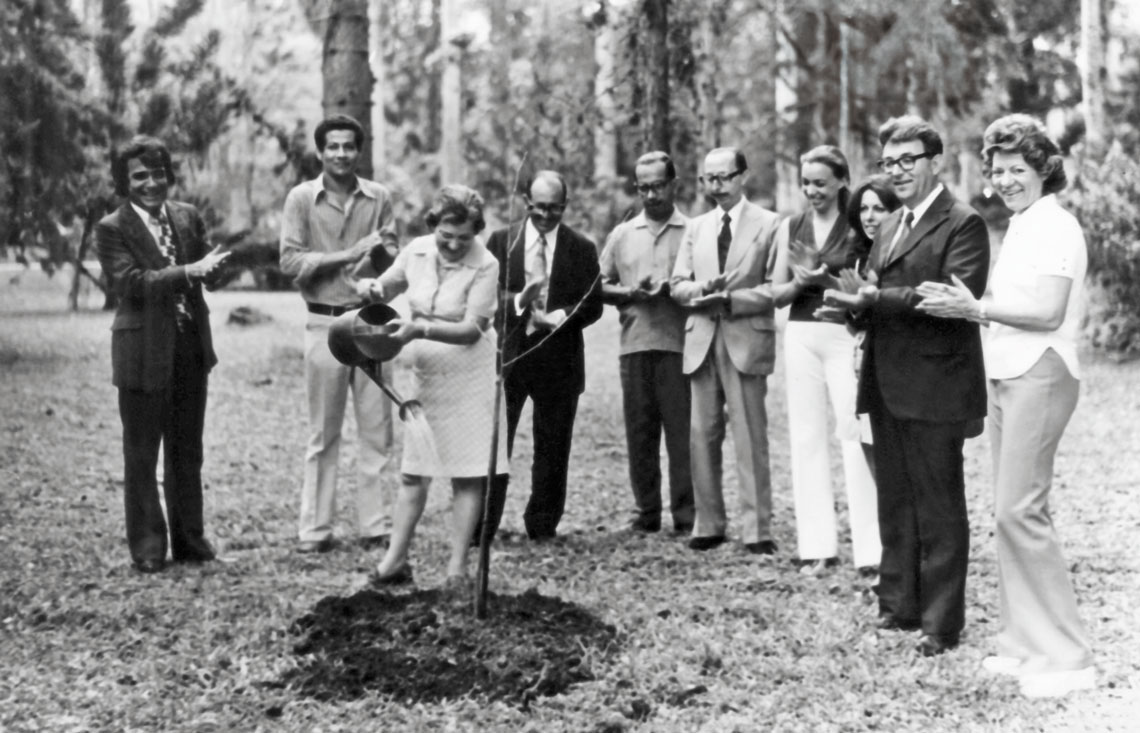Graziela Maciel Barroso (1912–2003) was a central figure in the construction of Brazilian botany. “She was an example of how it is possible to do research with lots of pleasure, lots of satisfaction, instilling the joy of discovery in us,” says José Rubens Pirani, from the Department of Botany of the University of São Paulo (USP), who met her in the early 1980s. With the students often preferring the flashiest and biggest flowers, she insisted: “Even the smallest flower has admirable characteristics. Place it under the magnifying glass and you’ll see how wonderful it is.
From Corumbá, in the state of Mato Grosso do Sul, Barroso was known as the “grande dame of botany,” having trained hundreds of researchers on graduate programs at universities in Rio de Janeiro, Recife, Campinas, and Brasília. As a researcher for the Botanical Garden of Rio de Janeiro (JBRJ), she identified 11 new genera and 132 new species of plants, especially in families of her specialty, such as Asteraceae, which includes the sunflower, the daisy, and the lettuce, and Myrtaceae, which includes the guava, the pitanga, and the jabuticaba.
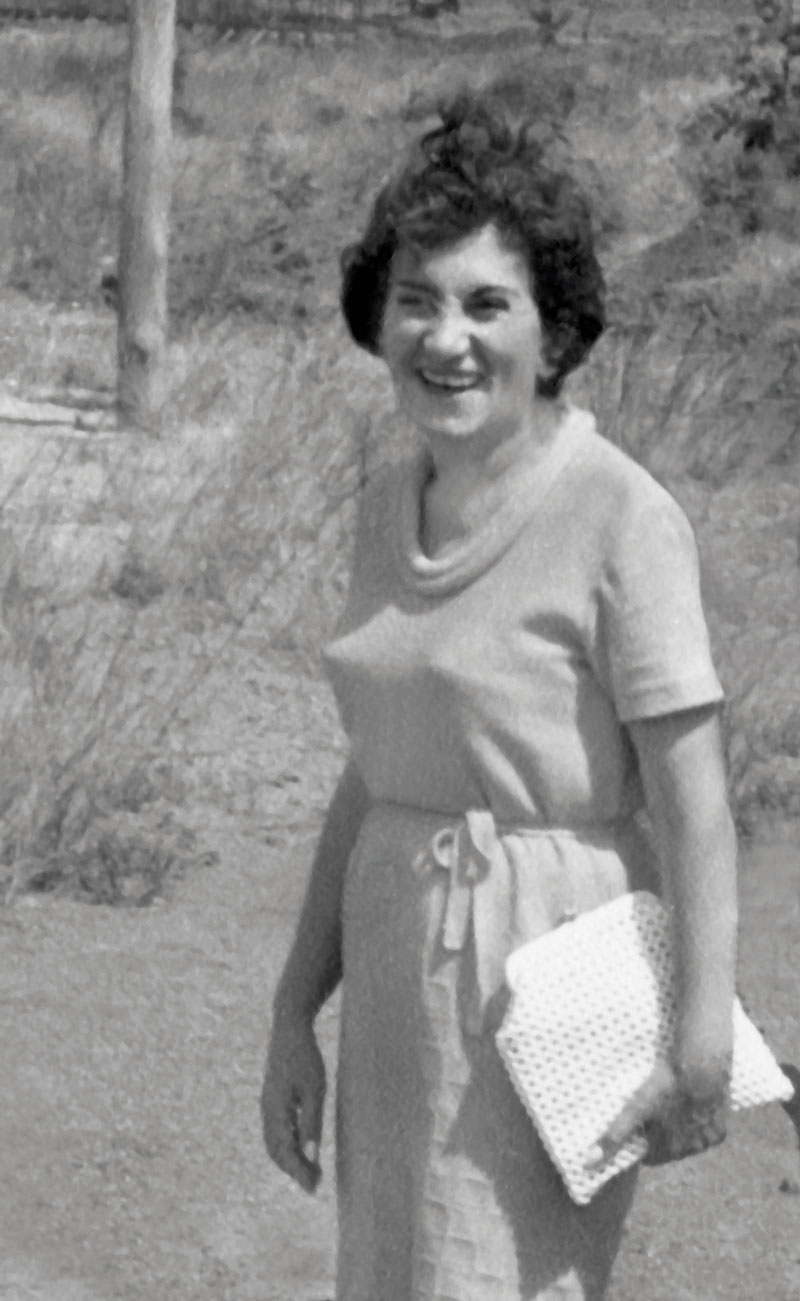
JBRJ / Arquivo Graziela Maciel BarrosoAt the UnB campus in 1967JBRJ / Arquivo Graziela Maciel Barroso
“Throughout her career, identifying a plant was a much more arduous task than today, because it was necessary to do a lot of bibliographical research in libraries and herbariums,” explains botanist Marcelo da Costa Souza, coordinator of the Botanical Garden of the Federal Rural University of Rio de Janeiro (UFFRJ) In recent years, access to digital collections from Brazil and other countries has made this work incomparably quicker.
She also published 65 scientific articles and wrote essential books for teaching and researching the systematics — or classification — of plants. One of her works, Sistemática de angiospermas do Brasil (Livros Técnicos e Científicos/Edusp), which translates as “Systematics of angiosperms from Brazil,” was published in three volumes between 1978 and 1986, and became an international reference.
Even with compulsory retirement, in 1982, she did not stop researching, teaching, and advising students. In 1999, aged 87, she published another book Frutos e sementes: Morfologia aplicada à sistemática de dicotiledôneas (Fruits and seeds: morphology applied to the systematics of dicotyledons; Editora UFV), coauthored by Marli Pires Morim and Carmen Lúcia Ichaso, of JBRJ, and Ariane Luna Peixoto, of UFRRJ. The herbariums for which she identified plants helped to map species threatened by extinction and to preserve the areas in which they were found.
With the students
“She was the greatest trainer of human resources in the field in Brazil in the twentieth century,” states Morim. Barroso was “Mrs. Graziela” for many, or “Aunt Graziela” for the more affectionate students. The familiar expression shows the nature of the more than just technical and scientific training that she gave the students.
Peixoto, who did a PhD under her guidance, says that Barroso did not separate research advice from life advice for her students. “Mrs. Graziela had a holistic view of student training. She saw research as part of life, without disassociating the professional dimension from the family and personal ones.”
Souza remembers that she did not present him to colleagues as “my student” or “my advisee.” It was “my son.” She advised him as she approached 90 years of age. “Even with so much experience, she was humble and perceived that she always had to keep on studying,” he says.
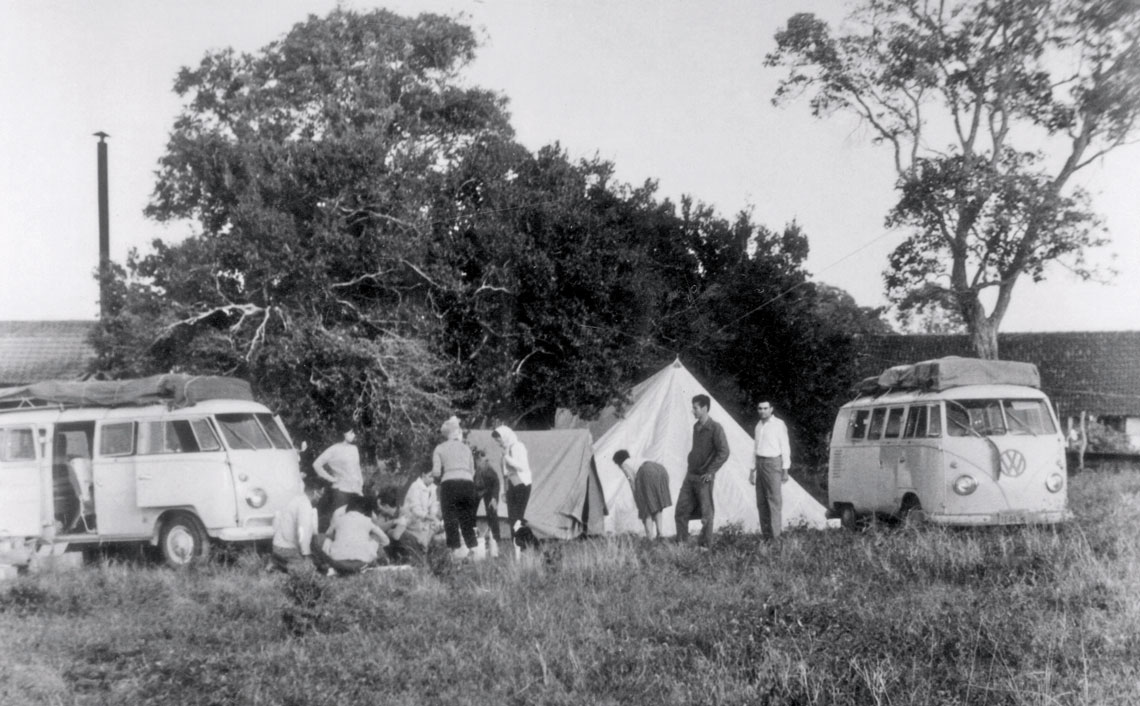
JBRJ / Arquivo Graziela Maciel BarrosoAn expedition to the South of Brazil to collect plants in 1964JBRJ / Arquivo Graziela Maciel Barroso
The nurturing of her students could slip into a maternal feeling, but she was still demanding. Morim always remembers the day when she told her: “An advisor is not a nanny.”
Barroso nurtured the students’ commitment to the work and inspired them to research. “You have the holy fire of research,” she told Pirani, a beginner at the time, after watching one of the first seminars by the young botanist during his graduate course at USP at the start of the 1980s. Pirani says that Barroso conveyed her affection and fascination of the studied material to her students.
Her devotion to botany, evident in the classrooms and herbariums, overflowed on field trips. Peixoto was with her in Goiás when they finally found a species they were looking for, Deianira nervosa, a shrub with pink flowers. “Mrs. Graziela bent down, looked, and said a mixture of poetry and prayer in which she described with emotion the parts of the plant, the sunlight, and the sky itself, ending in a kind of thank you,” she recalls. Pirani adds: “She spoke and wrote in the most poetic manner, with a romantic streak, something stifled among us scientists, due to the demand for objectivity in the description of plants.”
Barroso could only dedicate herself to botany from the age of 30. She married agronomist Liberato Joaquim Barroso (1900–1949) when she was 16 and had two children: Mirtila, who became an artist, and Manfredo, who was an airplane pilot.
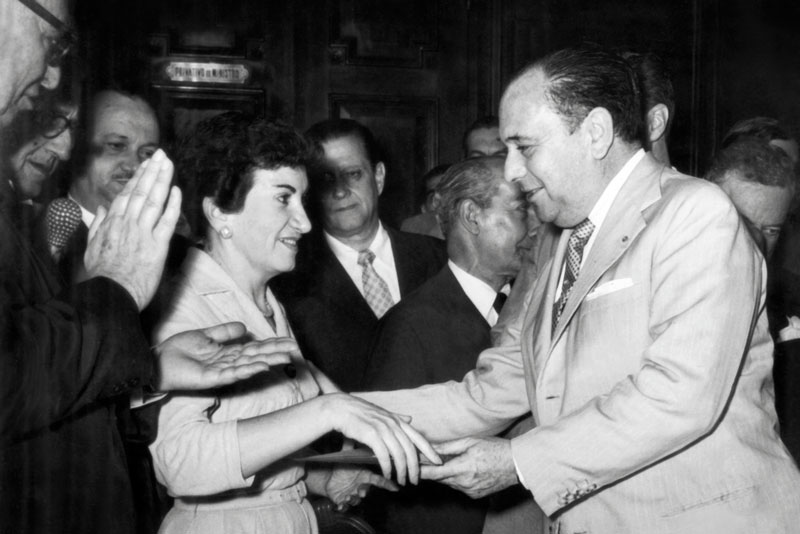
JBRJ / Arquivo Graziela Maciel BarrosoRecognition upon receiving a commemorative medal for the 150th anniversary of the Rio de Janeiro Botanical Garden, in 1958JBRJ / Arquivo Graziela Maciel Barroso
With her children in their adolescence, she decided to study botany, encouraged by her husband, her first and greatest teacher in the area, in her own opinion. Liberato worked in the Botanical Garden of Rio de Janeiro and she became an intern there. Some years later, in 1946, she was the first woman to take the public competition for research in the institution. She came in second place.
Barroso continued to study systematic botany in the Botanical Garden until her husband died, when she was 37 years old. Even without formal training in the area, she advised students and interns at the institution. “She said she suffered discrimination for being a woman. They said her place was in the home, not researching,” says Souza.
At 47 years of age, she entered university. Soon after, in 1960, Manfredo died when the Varig DC-3 of which he was the commander crashed during an unsuccessful takeoff. Despite being devastated by the loss of her son, she graduated in biology from the old State University of Guanabara, currently State University of Rio de Janeiro (UERJ).
Already recognized as a researcher and educator, she obtained her PhD at the age of 61, from the University of Campinas (UNICAMP), in 1973. Prior to this, she had advised students and set up the Botany Department of the University of Brasília (UnB).
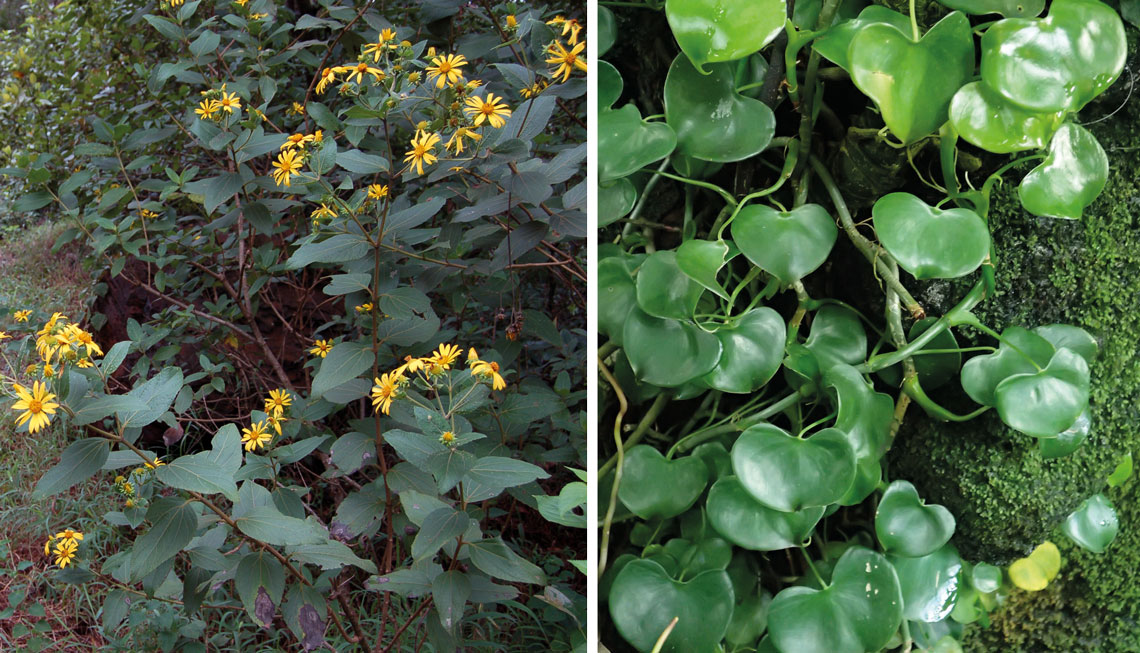
mbzFund / FLICKR | Krzysztof Ziarnek, Kenraiz / Wikimedia CommonsTwo species named in her honor: Aspilia grazielae, of the sunflower family (left), and Philodendron grazielae, a rare and perennial vine (right)mbzFund / FLICKR | Krzysztof Ziarnek, Kenraiz / Wikimedia Commons
From 1966 to 1969, as a teacher at UnB, she witnessed the persecution of teachers by the military government. In August 1968, soldiers invaded the university and arrested students and employers. “She used to say that she grabbed a national flag and hugged some students, trying to protect them during the invasion. Afterwards, she went to visit the students in jail,” affirms Morim.
Barroso wrote letters to the dean of the university and the President of the Republic appealing for the students to be released. She also protested against the summary dismissal of teachers. Later, she warned about the deforestation caused by the construction of the Trans-Amazonian Highway. Seen by the government as a communist and an adversary of the regime, she was prevented from entering the Botanical Garden of Rio de Janeiro for three months, in 1974, when then-President Ernesto Geisel (1907–1996) occupied one of the buildings as a residence.
“Mrs. Graziela was nonpartisan, but firm in the exercise of citizenship,” clarifies Morim. British botanist Simon Mayo, of the Royal Botanic Gardens, Kew, in London, highlighted Barroso’s strength in a testimony recorded in 2012: “She had courage to stand up for herself, even when it was really difficult to defend science. Very quiet and friendly, inside she was steel.”
After UnB, Barroso returned to the JBRJ, worked with the systematics, morphology, and taxonomy (classification) of plants, becoming one of the greatest specialists of plant species in the country. She taught courses on graduate programs at UNICAMP, the Federal University of Pernambuco, and the National Museum at the Federal University of Rio de Janeiro (UFRJ), among others. She was consulted by researchers across the country to help in the identification and cataloging of species.
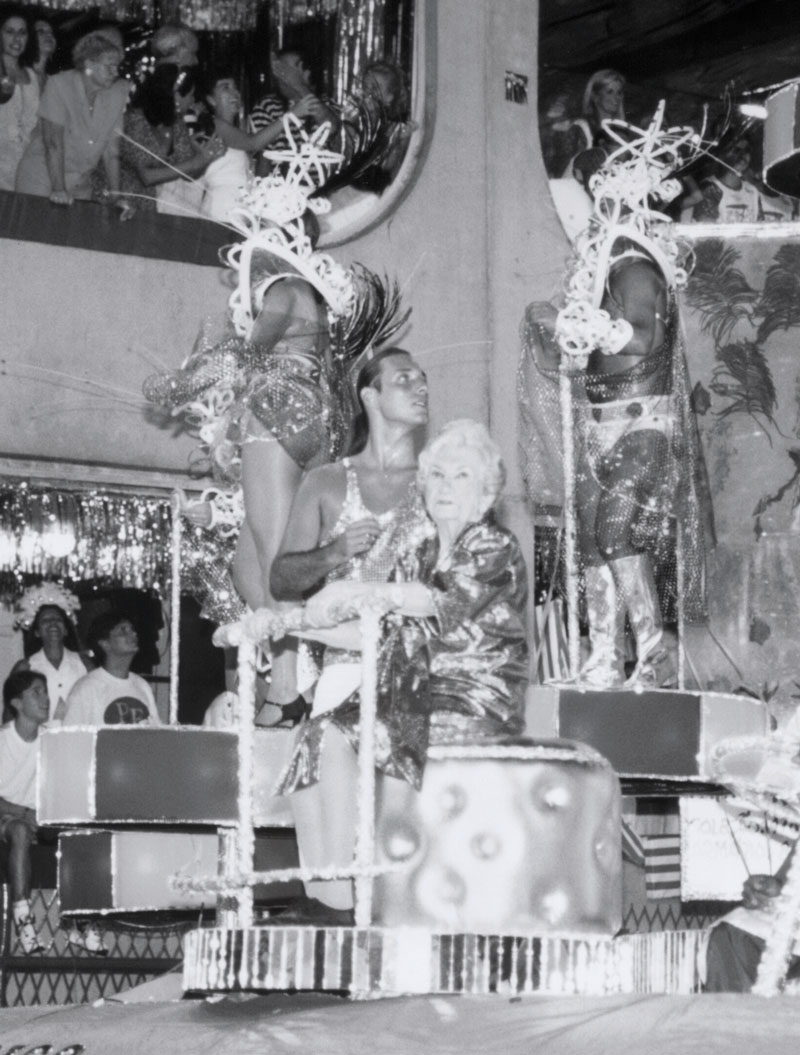
JBRJ / Arquivo Graziela Maciel BarrosoIn 1997, aged 80, on a carnival float of the Unidos da Tijuca School of Samba at the Rio de Janeiro carnival paradeJBRJ / Arquivo Graziela Maciel Barroso
In her honor, her botany colleagues named four genera and 83 species of plants, such as the trees caiapiá-da-cana (Dorstenia grazielae), maria-preta (Diatenopteryx grazielae), and pata-de-vaca (Bauhinia grazielae) described by former students or colleagues from other countries. In 1999, she was awarded with one of the greatest honors in the field, the Millennium Botany Award, offered by the International Botanical Congress, in the USA.
At nearly 90 years of age, she still visited the Botanical Garden in Rio once or twice a week. She began losing her eyesight. “I would help her see the plants in the microscope and would describe what she was observing,” says Souza, the last botanist she advised. “Marcelo became Mrs. Graziela’s eyes and was very important in this final moment of hers,” assesses ecologist Luis Fernando Tavares de Menezes, of the Federal University of Espírito Santo (UFES), who was the one who introduced her to Souza. “She would get very distressed at not being able to see the details of the plants.”
Barroso died at 91 years of age, after being elected to the Brazilian Academy of Sciences (she was never sworn in). Just before, she was hospitalized with lung problems. Peixoto visited her and left the hospital with a message for Souza: “Mrs. Graziela said not to forget to identify the material that is under the bench.”
Republish

